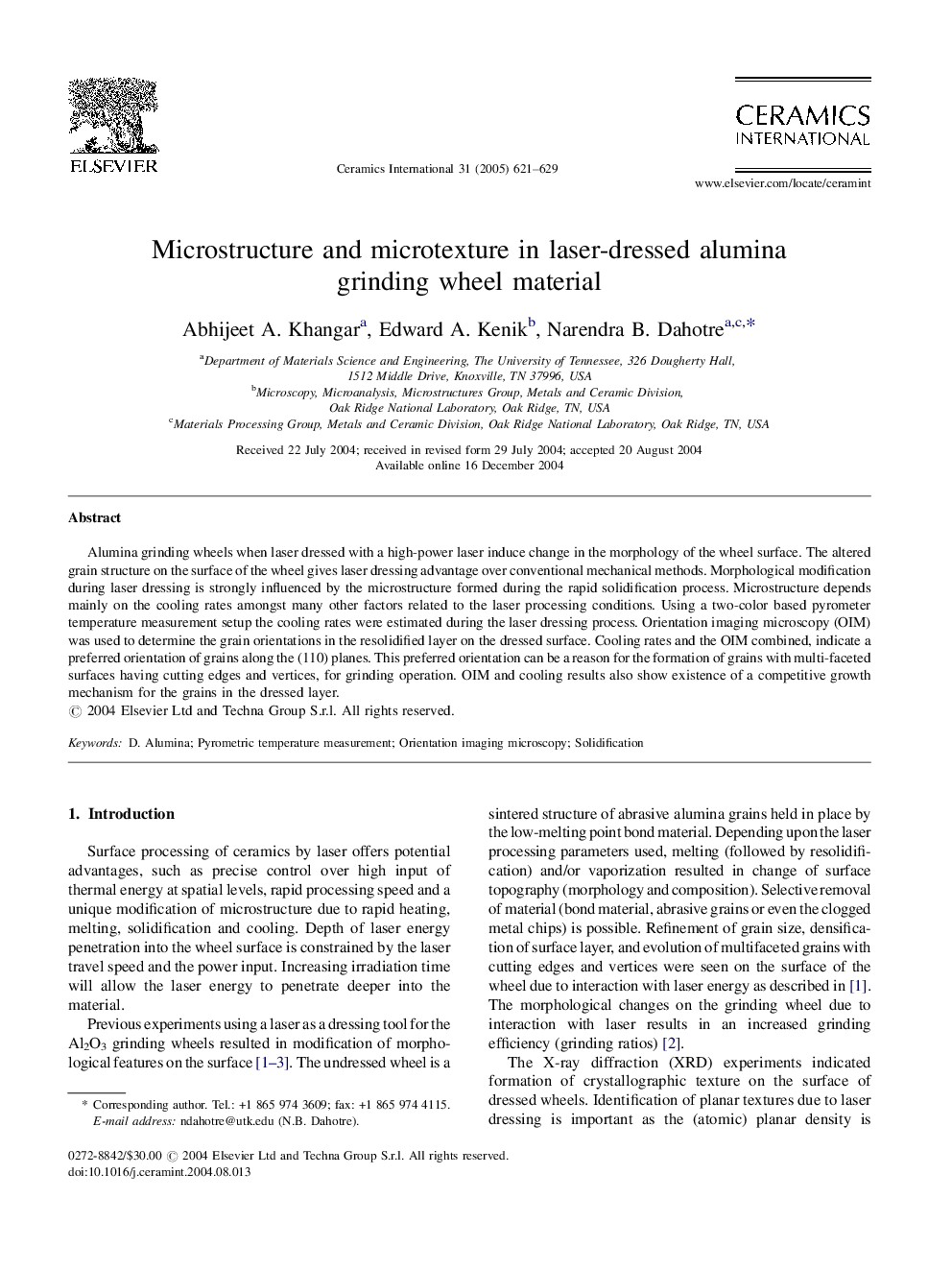| Article ID | Journal | Published Year | Pages | File Type |
|---|---|---|---|---|
| 10626461 | Ceramics International | 2005 | 9 Pages |
Abstract
Alumina grinding wheels when laser dressed with a high-power laser induce change in the morphology of the wheel surface. The altered grain structure on the surface of the wheel gives laser dressing advantage over conventional mechanical methods. Morphological modification during laser dressing is strongly influenced by the microstructure formed during the rapid solidification process. Microstructure depends mainly on the cooling rates amongst many other factors related to the laser processing conditions. Using a two-color based pyrometer temperature measurement setup the cooling rates were estimated during the laser dressing process. Orientation imaging microscopy (OIM) was used to determine the grain orientations in the resolidified layer on the dressed surface. Cooling rates and the OIM combined, indicate a preferred orientation of grains along the (110) planes. This preferred orientation can be a reason for the formation of grains with multi-faceted surfaces having cutting edges and vertices, for grinding operation. OIM and cooling results also show existence of a competitive growth mechanism for the grains in the dressed layer.
Related Topics
Physical Sciences and Engineering
Materials Science
Ceramics and Composites
Authors
Abhijeet A. Khangar, Edward A. Kenik, Narendra B. Dahotre,
